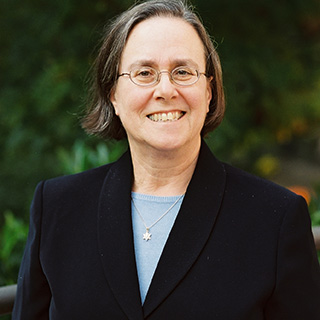Who Counts?

There was tension in the air that night in 1974 as members of Manhattan’s Tifereth Israel – Town and Village Synagogue filled the social hall, eager to join battle on the critical question of whether or not we would count women in the minyan. For those now accustomed to including women, the practice in about 85% of Conservative synagogues today, it may be hard to imagine the emotion that crackled through the air. Rumors about what different people would say were rife. Everyone knew that the rabbi, Stephen C. Lerner, was in favor of changing the policy. Some said that his own father, a respected member of the shul, disagreed with him. As the rabbi’s wife, I was concerned when my father–in–law raised his hand to speak. “When I was a boy growing up in the Ukraine,” said he with a bit of an accent, “and they asked the local peasants how many people had come to the town meeting, they would say twenty people and ten Jews. I think that we should stop counting that way.” The congregation voted overwhelmingly in favor of including women in the minyan.
This week’s Torah reading, the first chapters of the Book of Numbers, opens with the census of the Israelites in the Sinai Desert. It is apparently identical with the one recorded in Exodus (30:11–16, 38:26). God says to Moses “Take a census of the whole Israelite community, by the clans of its ancestral houses, listing the names, every male, head by head” (Numbers 12). Rashi explains that God wants the people counted because God loves them so much. That love seems to have two aspects, as it is directed both to the corporate entity, the Israelite community, and to each person, whose name must be listed separately. On one level what matters is the whole people who function almost as interchangeable ciphers; on another, each person has the individuality implicit in his name.
The total 603,550, however, falls far short of “the whole Israelite community,” for it includes only men, twenty years of age and older, excluding the Levites, who are to be counted separately. Clearly, the motivation for this census stems from the need to establish a fighting force. The Torah exempts the Levites whose cultic roles take precedence over the needs of the military. All the men over twenty are counted, regardless of their personal status, health, intelligence, physical strength, age or any other factor which might make them either permanently or temporarily unsuited.
Does Rashi, whose only children were daughters, assume that God’s special love extended only to the fighting men and the male Levites? That is an unlikely assumption. Yet the absence of women and children from “the whole Israelite community” warrants neither mention nor explanation. It is a given. We could let this pass without comment were the command only to list those eligible for the potential army because women and children might not have been as useful as soldiers. But God first couches the request in the broadest terms, only to modify and limit it in the next utterance.
Who is to be counted is not a question with an obvious answer. For the purposes of determining representation, the United States Constitution originally stipulated that slaves were to be counted as three–fifths of a person. In Article One we learn that “Representatives […] shall be apportioned […] according to their respective Numbers, which shall be determined by adding to the whole Number of free Persons […] three fifths of all other Persons.” Today, are not the heated arguments over the decennial census in this country, on one level, a continuation of the tension over who really counts?
The ingenuity of the Jewish calendar most often has us start the Book of Numbers as we finish numbering the Omer, the forty–nine day period from the second night of Pesah until the night before Shavu’ot. We count the days and the weeks so that we will complete the biblically ordained seven complete weeks (Leviticus 23:15) which separate these two spring festivals.
Just as counting people is not a rote pursuit, so do we find purpose in counting days. As humans we are challenged to invest each of our limited days with meaning. The Psalmist asks of God “Teach us to count our days rightly that we might obtain a wise heart” (90:12). The twentieth–century Israeli poet Leah Goldberg writes “Indeed I know this is a day without any counterpart, / […] And no mark and no omen ranging from good to evil / Separates it from other days.” In the rush of our days it often seems that one indistinguishable day follows the next, but Goldberg proceeds to resolve her apparent paradox by noticing what is special about this day “And only that the sun has the scent of jasmine …” Both days and people warrant the attention to their distinctiveness that enables us to appreciate them.
May we attempt, as we approach the end of the Omer and the census of Numbers, to see the value of every individual and to invest each day with meaning.
Shabbat shalom and hag same’ah!
Anne Lapidus Lerner



